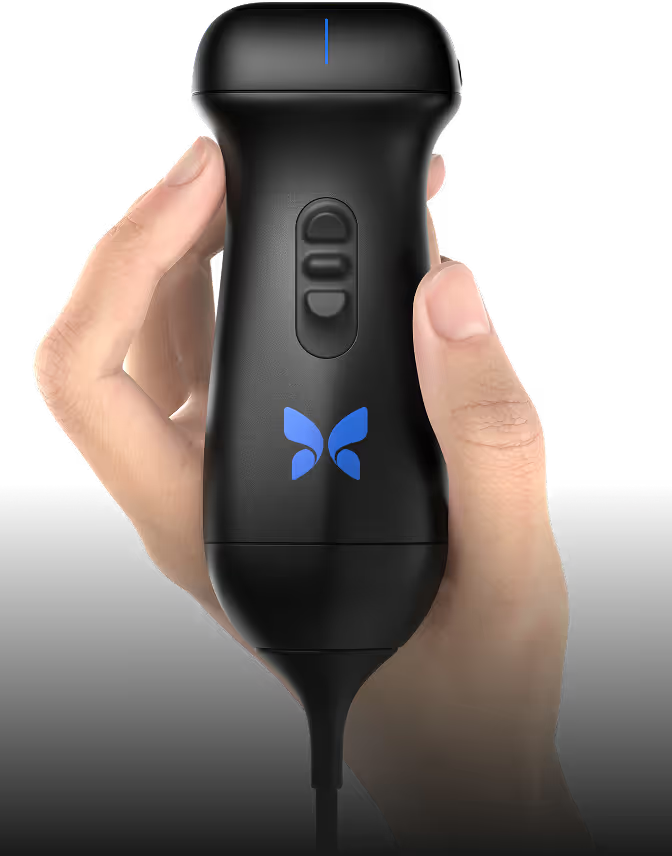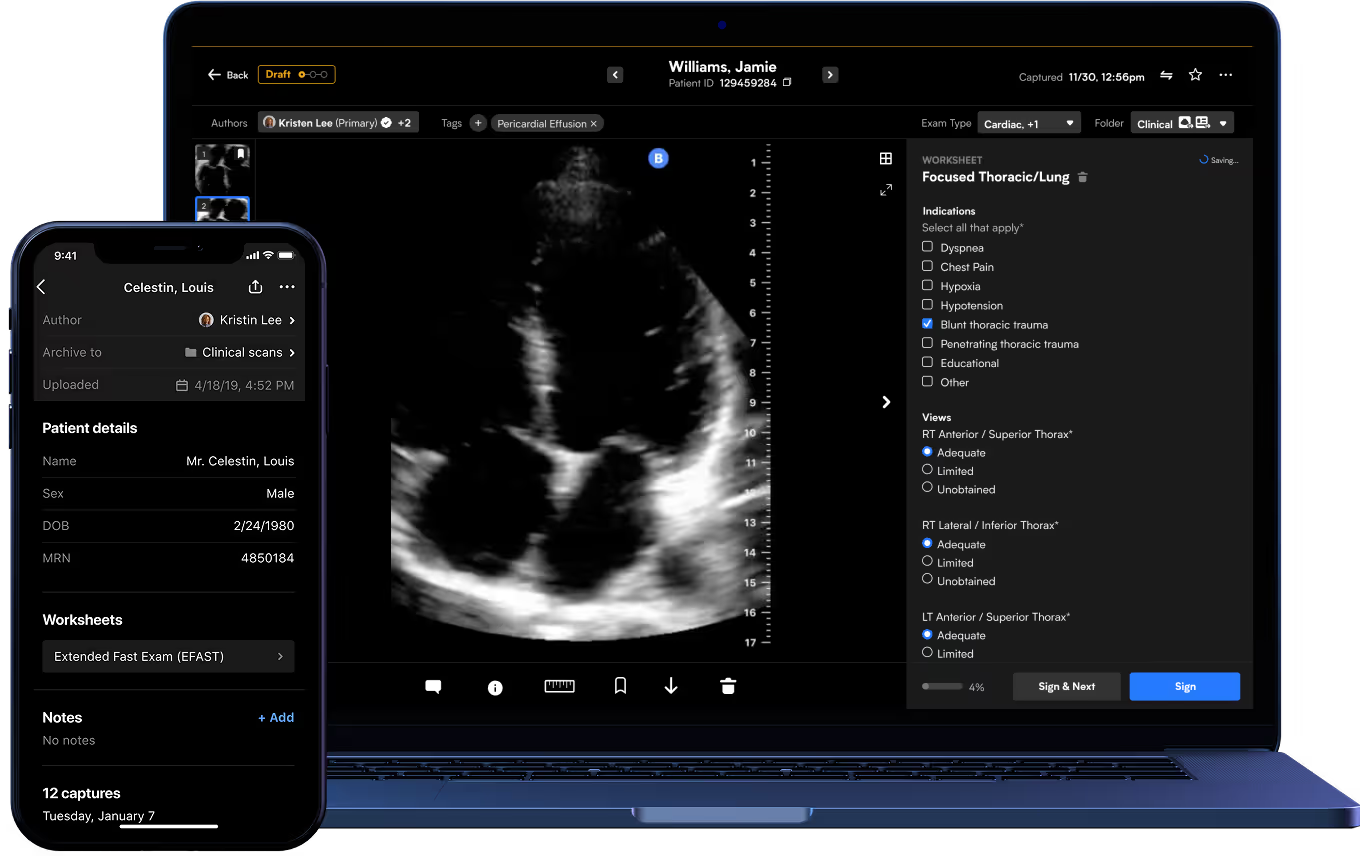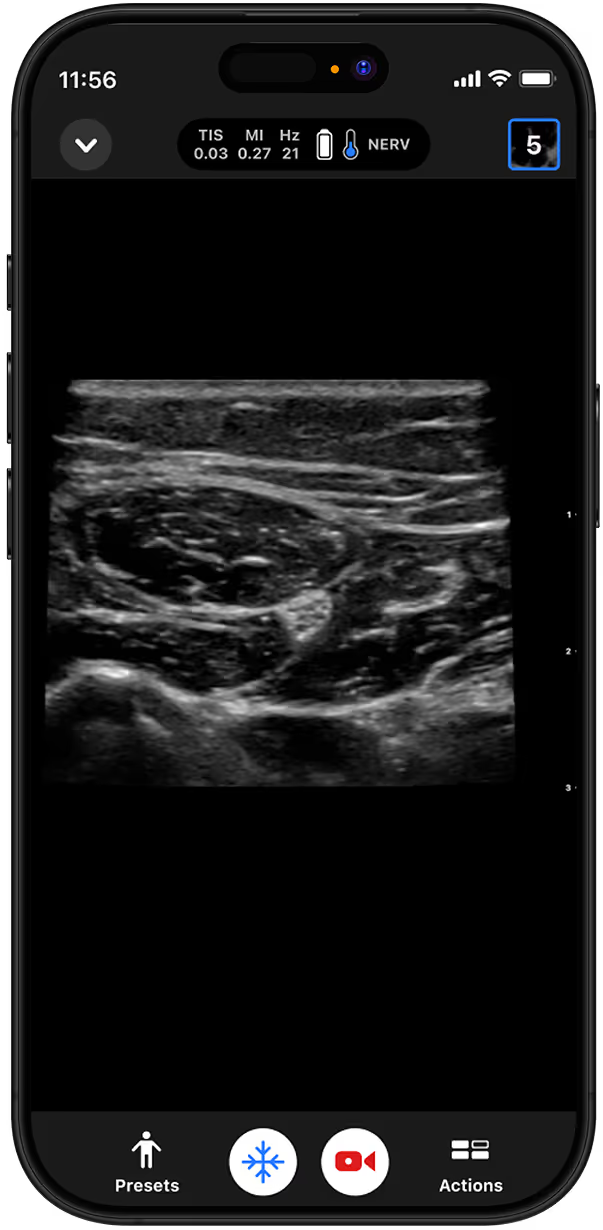
High-quality care on the go
An integrated imaging solution for the OR, ICU, Clinic, or anywhere you care.
Why Butterfly for Anesthesiology
All-in-one imaging, cart-level tools, and an on-the-go workflow for clinicians on the move.
Together, iQ3™ and Compass™ help you:
- Improve patient care with tools like 3D array, Biplane Imaging, and Needle: Out of Plane
- Move from linear to curvilinear settings during real-time scanning
- Assess high-risk patients’ cardiac and pulmonary function
- Manage gastric status, particularly for patients on GLP1s
- Remain complaint by sending images downstream to your EMR and PACS
- Train Residents with asynchronous learning tools and track proficiency


Delivers high-quality, whole-body imaging with a single, portable probe.
Butterfly iQ3 boots up in seconds and fits in your pocket. No switching probes. No waiting on a cart. Just sharp, reliable images — from triage to trauma to cardiac arrest.
Explore iQ3


Teaching for perioperative assessment
Acquire images with real-time feedback from quality indicators, identify and locate anatomy easily and accurately with anatomical labeling, and position and orient your Butterfly probe with the help of detailed walkthrough instructions and reference imagery.
Explore Butterfly ScanLab


Compass, our integrated software platform, helps your department streamline workflows and remove friction from documentation.
It connects to your EHR, and makes it easier for every scan — from Butterfly and other probes, regardless of the machine brand — to be saved, billed for, and QA’d.
Explore Butterfly Compass
‘Now we can have the best of all the worlds, which is portability, reliability, as well as standard of care not being compromised with your image acquisition’
Dr. Nishant Shah
POCUS for Anesthesiology
Clinical evidence
This isn’t theory. It’s clinical reality.

Vascular Access
Radial Artery

Cardiac
Cardiac Biplane PLAX PSAX

Abdomen
IVC long
Clinical gallery
- https://www.ncbi.nlm.nih.gov/pmc/articles/PMC2766872/
- https://www.ncbi.nlm.nih.gov/pmc/articles/PMC6190418/
- https://pmc.ncbi.nlm.nih.gov/articles/PMC5296812/







